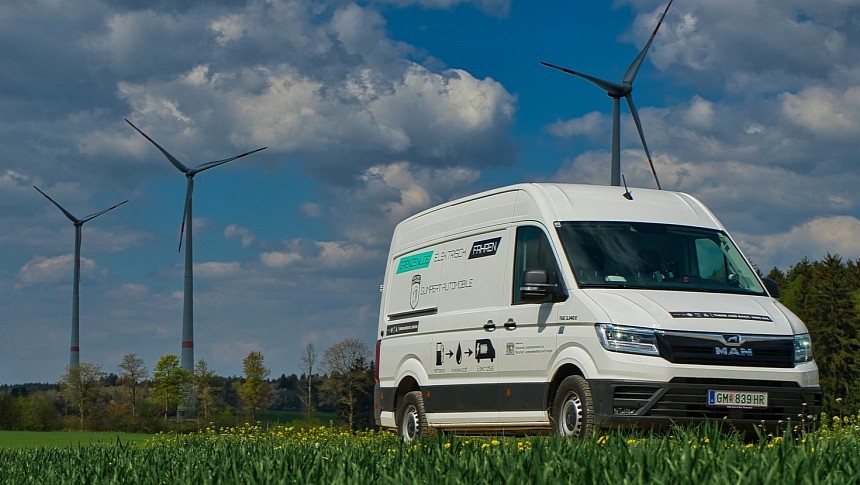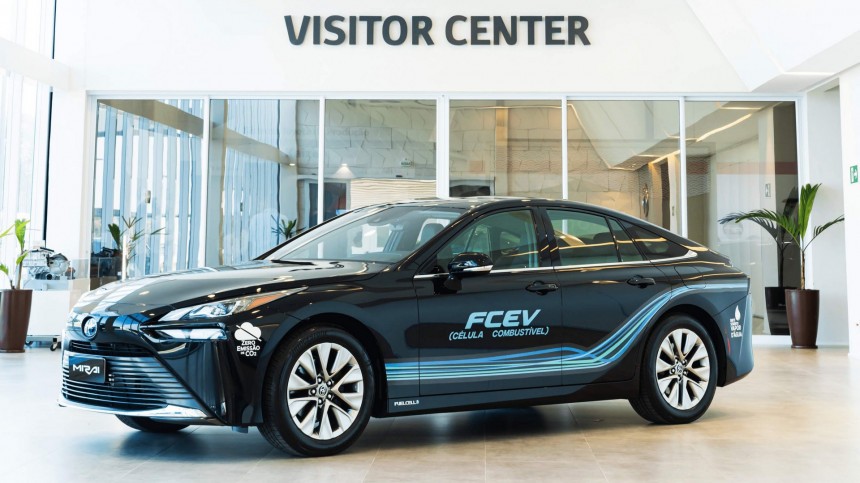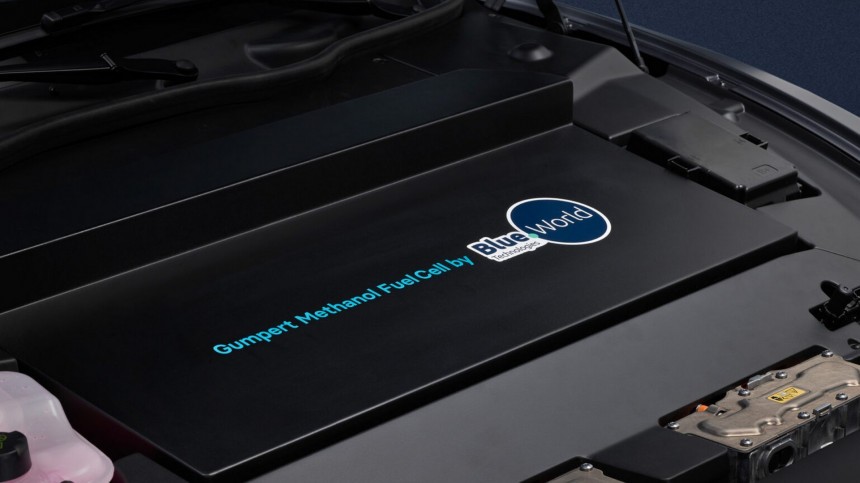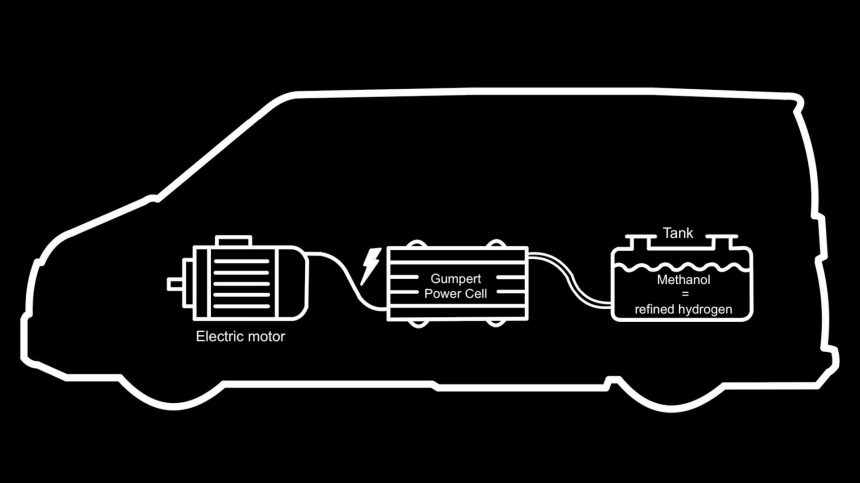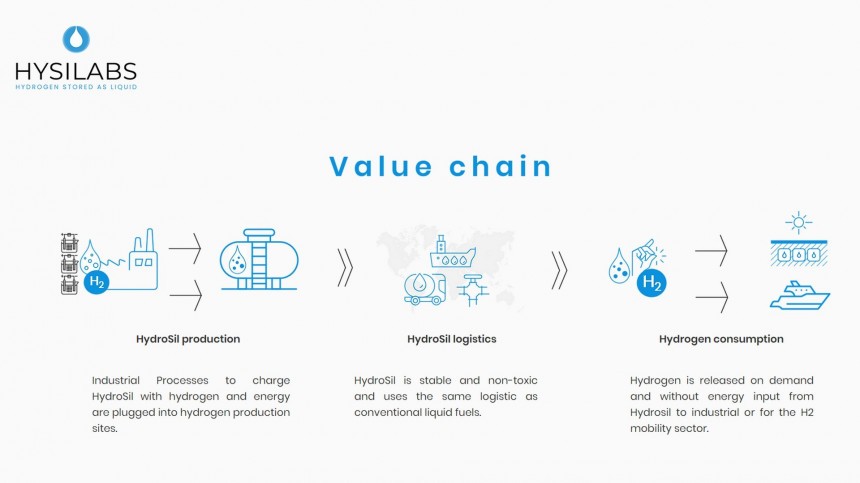One of the major issues related to hydrogen is that it is a gas. That makes it difficult to transport and store, but new solutions may solve that in ways that most people may have never imagined. What if liquids helped to carry hydrogen? Forget water and electrolysis. The deal involves reformers and renewable fuels – or a liquid designed to transport the gas.
If cars could extract hydrogen from liquids in their tanks, the world could use its current fueling infrastructure, which would save a lot of money. Another possibility is that existing fuel stations just add a reformer to their services, generating hydrogen with renewable fuel. Several people are pursuing that idea.
Toyota recently revealed in Brazil that it lent a second-generation Mirai to a project that wants to create hydrogen from ethanol. According to the Brazilian scientists involved in the project, they found a way to produce green hydrogen from this renewable fuel that would be cheaper than applying electricity to water to dissociate oxygen from hydrogen.
Thiago Lopes is one of the members of the Research Center for Greenhouse Gas Innovation (RCGI) team that is involved with the solution. He told autoevolution that he would only have the exact cost numbers when the experimental hydrogen station at Universidade de São Paulo (USP) is ready. Digging a little deeper, I discovered that the hydrogen station would use technology developed by Hytron, a Brazilian company bought by NEA Group from Germany. It is not clear yet if RCGI will help improve Hytron's reform technology or if the partnership just wants to share the methods with Brazilian academia. I have asked Hytron about that and have not received any reply so far.
The idea is to add ethanol reformers to current fuel stations that sell the renewable fuel everywhere in Brazil. That said, anyone with a fuel cell electric vehicle (FCEV) could have where to top up their hydrogen tanks. Great Wall Motors recently announced a similar study, limited to São Paulo. The Chinese company bought a factory from Mercedes-Benz in Iracemápolis. Last week, it disclosed it intends to create a hydrogen fueling network in Brazil's wealthiest state. The company shared it would have at least one fuel station with a reformer to produce hydrogen from ethanol.
Although that could work, it seems that the most logical option would be to have cars able to produce their own hydrogen. If that were the case, it would not be necessary to make any infrastructure changes for FCEVs to obtain hydrogen anywhere, especially in places that already sell ethanol in fuel stations, such as Brazil, France, and the US. The bad news is that customers would have something else in their cars to worry about. If a reformer does not last for a long time, it will increase maintenance costs.
I am aware of only one company willing to sell a vehicle with a reformer. Roland Gumpert helped create Apollo. When the company went bankrupt, he developed a new sports car that worked with a fuel cell and a reformer, naming it after his daughter. The last time I heard about the RG Nathalie was in 2019. Then the pandemic came, credits became harder to obtain, and Gumpert also had to change his plans.
His company is now focused on the Gumpert Power Cell. According to the company's website, it integrates the fuel cell and the reformer responsible for transforming green methanol into hydrogen and CO2 with "an upstream reforming process." I got in touch with Roland Gumpert Automobiles to learn more about this reforming method and also about the future of the RG Nathalie, but the company did not get back to me until this story was published.
Finally, there's a French startup called HySiLabs. It developed a liquid called HydroSil that is meant solely to transport hydrogen. According to the company's page, HydroSil is "stable, safe, Earth-friendly, non-organic," and, above all, does not require energy to release the H2 it contains. Being a liquid, it can use conventional distribution channels, such as tank trucks and pipes. The part that intrigued me most was that it needed no energy to release the gas, which would be perfect for a vehicle with HydroSil in its fuel tank. Unfortunately, it was the third company I tried to get in touch with that has yet to reply to my questions.
Theoretically, we have several enterprises dedicated to turning hydrogen into a feasible option for carrying energy and feeding vehicles. In practice, none of the companies I contacted showed much enthusiasm for sharing their solutions or explaining them to the public. Unfortunately, that helps to explain why some people believe the only path for sustainable and carbon-neutral transportation lies in heavy batteries that hold very little energy. When (and if) they get back to me, we may have a better idea of how they are planning to turn hydrogen transportation into something easier – and more feasible – than it is today. Liquids seem to be the key to achieving that.
Toyota recently revealed in Brazil that it lent a second-generation Mirai to a project that wants to create hydrogen from ethanol. According to the Brazilian scientists involved in the project, they found a way to produce green hydrogen from this renewable fuel that would be cheaper than applying electricity to water to dissociate oxygen from hydrogen.
The idea is to add ethanol reformers to current fuel stations that sell the renewable fuel everywhere in Brazil. That said, anyone with a fuel cell electric vehicle (FCEV) could have where to top up their hydrogen tanks. Great Wall Motors recently announced a similar study, limited to São Paulo. The Chinese company bought a factory from Mercedes-Benz in Iracemápolis. Last week, it disclosed it intends to create a hydrogen fueling network in Brazil's wealthiest state. The company shared it would have at least one fuel station with a reformer to produce hydrogen from ethanol.
I am aware of only one company willing to sell a vehicle with a reformer. Roland Gumpert helped create Apollo. When the company went bankrupt, he developed a new sports car that worked with a fuel cell and a reformer, naming it after his daughter. The last time I heard about the RG Nathalie was in 2019. Then the pandemic came, credits became harder to obtain, and Gumpert also had to change his plans.
Finally, there's a French startup called HySiLabs. It developed a liquid called HydroSil that is meant solely to transport hydrogen. According to the company's page, HydroSil is "stable, safe, Earth-friendly, non-organic," and, above all, does not require energy to release the H2 it contains. Being a liquid, it can use conventional distribution channels, such as tank trucks and pipes. The part that intrigued me most was that it needed no energy to release the gas, which would be perfect for a vehicle with HydroSil in its fuel tank. Unfortunately, it was the third company I tried to get in touch with that has yet to reply to my questions.
